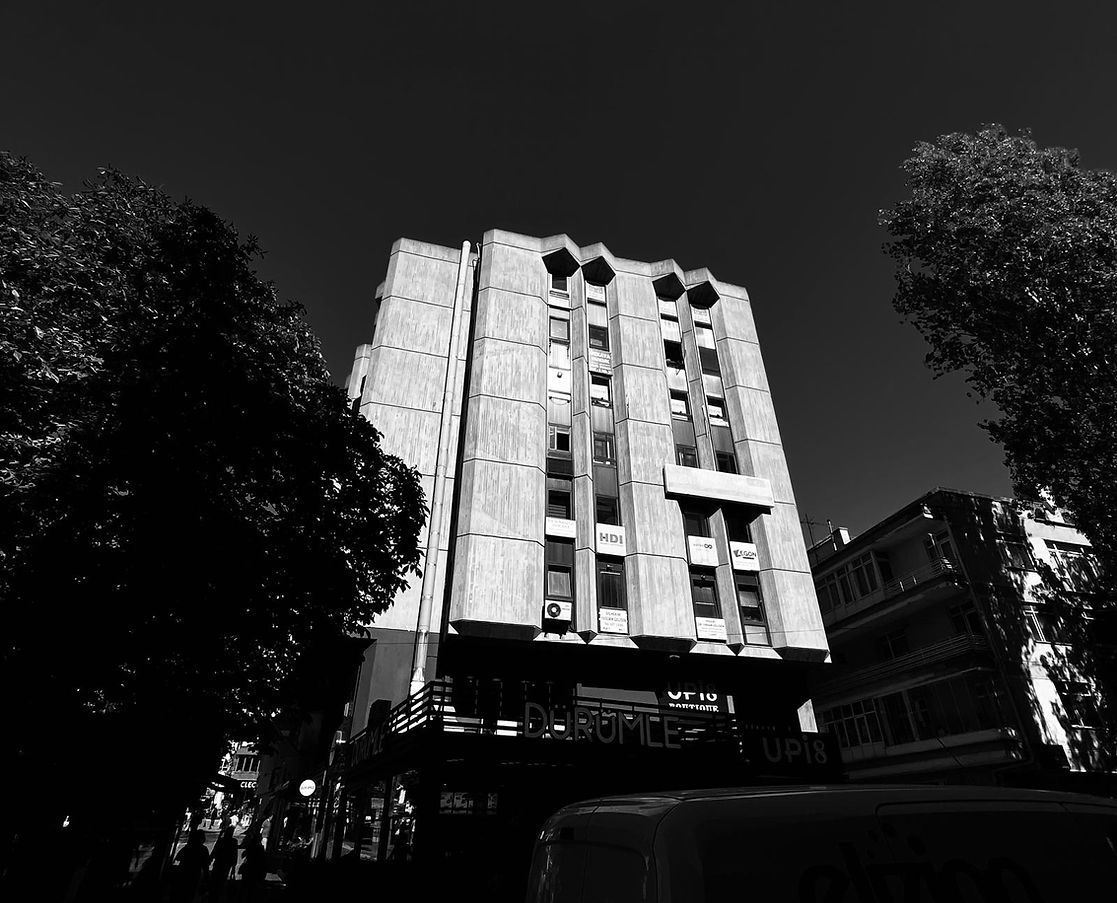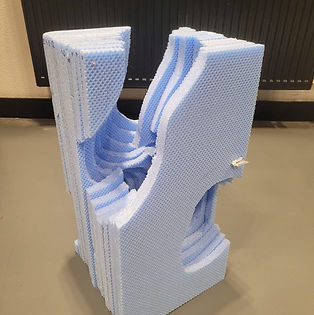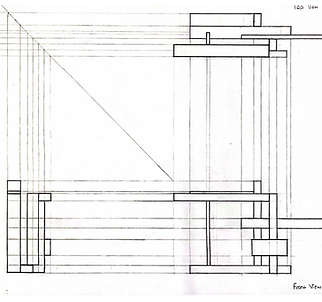
Hi!
I am architecture student Betül Şahin, welcome to my blog where I share my experiences, ideas and discoveries. I invite you to explore this interesting world together! You can join this adventure by going down.
PHOTOGRAPH BY BETÜL ŞAHİN

ARCH101

As the first assignment of the semester, we produced a three-dimensional structure that examined the basic elements and relationships of design.

We worked on a regular 3D organization by applying move, rotate, scale operations to the units.

In this assignment, we learned to work with the ordering principles of design by applying the cut and fold process and discovered volumes and volumetric relationships.

We worked on this task as preparation for the jury. Our aim is to produce three-dimensional organizations by applying the design processes and volumetric relationships we have learned so far.

Basic design in architecture education is the first stage of creativity. At the same time, it helps them to understand the balance of aesthetics and function by developing abstract thinking. This course is indispensable for architect candidates to get a strong start in the design world.
Here is my pre-jury model. Iapplied the operations we learned in the basic design course such as cut and fold, edge to edge and intersect. while creating this 3D structure, I worked by focusing on centrality, orthogonality and volume.

Today, we went to METU to examine concepts such as volume and hinge that we learned in the basic design course. We understood the examples of these concepts better, especially in the METU Faculty of Architecture building. It was an interesting and informative trip for us.
PHOTOGRAPH BY BETÜL ŞAHİN
.jpeg)
We finished our first term with the final jury. I presented all the applications we learned during the term in this model. First, I decided that my strategy would be centrality. Then, in order to establish centrality, I produced 3 different units and 14 different units that were variations of each other. Then, I created 3 different groups that provided volumetric relations with these units. Finally, I combined my 3 different groups to create my model. I also took care to apply the concepts of tickness, texture and trashold that we had just learned in my model.
You can watch the animation I made for my model by clicking on the link: https://youtu.be/-q7DhigDvKs
ARCH102
_page-0001%20(1)_edit.jpg)
In this study, I analyzed my body proportions and drew module figures in different poses at 1/10 scale. I completed each figure on consecutive papers using the abstraction method.

Working in pairs, we created a mass with different spatial conditions by carving 3 cm thick styrofoam layers of 30x30x60 cm. We placed the layers in different directions, taking into account the selected physical activities, and used the Modulor figure at 1/20 scale.

I presented my relationship with the area and my design strategy, spatial diversity. I represented the relationships I established with the area, such as rising and passing through.

In this study, I interpreted the design process of the Serpentine Pavilion in my model. Each step represents the relationships between the architectural form and the ground/landscape and the formation of the space. This model expresses the complex relationship between the architectural form and the ground in an abstract way.
ARCH111
The Architectural Communication Techniques course aims to develop the skills of an architect to express his ideas effectively and to present his projects correctly. This course focuses on strengthening communication at every stage of the design process by learning drawing, digital tools and visualization techniques.
For example, here I have a drawing in which we are working on Abstraction, free-hand drawing, line quality. I drew using horizontal, vertical and cross-line techniques applied in the studio

During the week we took a city, architecture and photography course, we walked around the buildings on the list given to us, chose perspectives and took photos of the buildings and their immediate surroundings.
PHOTOGRAPH BY BETÜL ŞAHİN

"Orthographic projection is a way of representing a three-dimensional object in two dimensions. For this we use 3 views; top view, front view and side view.

In this lesson, we learned how to use Photoshop. As today's homework, we were asked to design a poster to organize lines, outlines, color, image overlap, background and foreground, text and image, alignment, balance, scale, hierarchy. You can see the poster I designed on the side.

A new assignment was given from the orthographic drawing we learned before, but this time we learned how to make sections and completed our drawing by applying the sections.

Today we worked on producing the section and side view drawings of a geometric configuration and the axonometric drawing of the exploded section along the specified section line, which we learned in class.

In the final of our architectural communication techniques course, we were asked to prepare a poster describing the model we produced for our final jury. The content of this poster should be as follows: Design operations catalog, Model photos, Strategy/organizational diagram, Orthographic drawings: 2 views and 1 section, 3D axonometric drawing, 3D exploded axonometric drawing.

ARCH112

In this assignment, I hand-drew the 1/200 scale floor plan and poché section of House Number 7. I had the opportunity to learn proper drawing techniques, line weights, and architectural notation rules.
_page-0001.jpg)
After revising and editing the layers of my plan, section and elevation drawings in AutoCAD, I developed them in Illustrator according to the rules of architectural drawing. I delivered my drawings in 1/100 scale and with reference lines closed, only in PDF format.

In this study, each student individually produced a 1/200 scale model of the project they were researching using 1 mm white model cardboard. Then, they modeled the project's staircase in 1/100 scale, using the same material (including different thicknesses) in a single color, white.

I transformed the section drawing I produced in AutoCAD into a highly expressive collage consisting of a single image, reflecting the spatial qualities of the structure and its relationship with the context. I was free to use various digital techniques and collage methods such as layering and transparency; however, the legibility of the drawing had to be preserved.
ARCH121

Introduction to Architecture course aims to understand how buildings are designed and constructed by introducing the historical, cultural and technical dimensions of architecture.
Let me tell you about the REGULATING LINES article we wrote for this course.
Regulating Lines is a design concept that attaches importance to geometric proportions that provide harmony and order in buildings. The use of regulatory lines facilitates mathematical thinking because we would have difficulty in implementing regulatory lines without measurements and calculations. Thus, regulating lines not only provide organization, they also create balance and rhythm.

our other task in this lesson is "what does music mean?" listening to his speech and discussing it.
I have briefly written down my thoughts about this conversation below:
According to Leonard Bernstein's work, music is never about objects. Music just is. Many beautiful notes and sounds put together so well that we enjoy hearing them.In addition, He stated that it proved that music is actually the end product of deliberately combining notes in various variations to express different emotions.We use classical compositions as examples of this idea. It shows how different notes, melodies, rhythms and harmonies can evoke a wide range of emotions in listeners.
if you would like to listen to the speech, I will leave a link below
https://www.youtube.com/watch?v=U6JsfDIo4TA&list=PLU0HyYmOgH8Xn06fDThwLDh95igfZpurQ
Photograph: PA/EMPICS

The most important thing we learned in this lesson is ''compare and discuss''. There are some concepts that we need to pay attention to when comparing and discussing. These are concepts such as abstraction, composition, regulation, organization, character, function, texture, tectonics, material, strategy, tactics.
For example, when we compare the two pictures you see on the side, part of my comment is as follows: In the first picture, there is a man standing on the right, while there are many people standing on the left. Similarly, in the second picture, there is a large mountain on the right and many clouds in the sky on the left. In this picture, the clouds also form the background. The mountain stands out from the other elements and dominates the clouds in the background. It is clear that some dominant figures are used to separate the background from the foreground in both pictures.
A. Keyumers and his soldiers wearing tiger skins, Seyyid Lokman,1582
B. Fine Wind, Clear Morning, Katsushika Hokusai, 1826-33